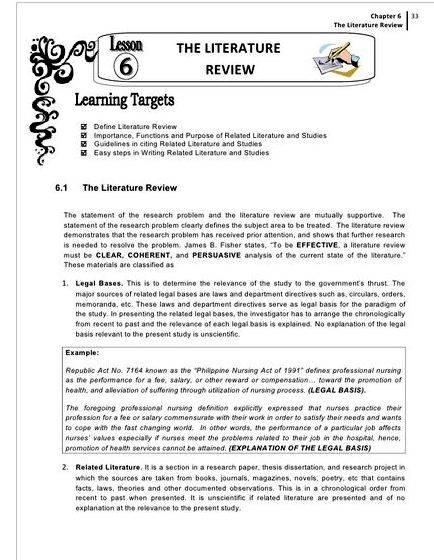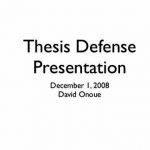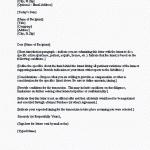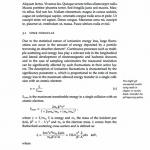Most universities offer comprehensive guidelines in their dissertation manuals about how to set up and organize the dissertation and the proposal. In the Social Sciences, most dissertations are organized into four or five chapters. However, there are many variations on the nature of these chapters, and the details are left up to the discretion of the Dissertation Committee. In the Social Sciences, the dissertation proposal generally consists of the first three chapters (in a five-chapter format) or the first two chapters (in a four-chapter format).
Dissertation Outline
Here is a generic outline for a five-chapter dissertation. The third chapter on methodology varies for a qualitative, quantitative, or mixed-method design. A four-chapter dissertation incorporates the literature review into the first chapter.
Chapter 1: Introduction
- Introduction
- Background of the Problem
- Statement of the Problem
- Purpose of the Study
- Research Questions
- Significance of the Study
- Definition of Terms
- Assumptions, Limitations, and Delimitations
- Conclusion
Chapter 2: Review of the Literature
- Introduction
- Search Description
- Conceptual or Theoretical Framework
- Review of Research (organized by variable or themes)
Chapter 3: Methodology (Qualitative)
- Introduction
- Research Design
- Research Questions
- Setting
- Participants
- Data Collection
- Data Analysis
- Conclusion
Chapter 3: Methodology (Quantitative)
Introduction
Research Design
Research Questions and Hypotheses
Population and Sample
Instrumentation
Data Collection
Data Analysis
Conclusion
Chapter 3: Methodology (Mixed)
- Introduction
- Research Design
- Research Questions and Hypotheses
- Setting and Sample
- Data Collection
- Data Analysis
- Conclusion
Chapter 4: Research Findings
- Introduction
- Findings (organized by Research Questions or Hypotheses)
- Conclusion
Chapter 5: Conclusions, Discussion, and Suggestions for Future Research
- Introduction
- Summary of Findings
- Conclusions (organized by Research Questions or Hypotheses)
- Discussion
- Suggestions for Future Research
- Conclusion
As an academic writer, you are expected to provide an analytical overview of the significant literature published on your topic. If your audience knows less than you do on the topic, your purpose is instructional. If the audience knows more than you do, your purpose is to demonstrate familiarity, expertise, and intelligence with the topic. In your review of literature you are expected to do the following:
- Place one’;s original work in the context of existing literature.
- Interpret the major issues surrounding your topic.
- Describe the relationship of each work to the others under consideration.
- Identify new ways to interpret, and shed light on any gaps in previous research.
- Resolve conflicts among seemingly contradictory previous studies.
- Determine which literature makes a significant contribution to the understanding of your topic.
- Point the way to further research on your topic.
Content of the Literature Review
The Literature Review must be well structured. and your ideas must flow logically from one point to the next. Ensure sources and references are current and relevant, cited appropriately according to your discipline. Present terminology and viewpoints on the topic in an unbiased and comprehensive manner.
Include the following content in your Literature Review:
- Provide an overview of the subject, issue, or theory under consideration.
- Divide outside works into categories and concepts (in support or against a particular position).
- Connect the works to what has come before your work and ideas.
- Provide conclusions about those works that make the greatest contribution to the understanding and development of your subject.
Consider the following when assessing whether to include each work in your review of literature:
- Qualifications: What are the author’;s credentials to make the judgments he or she has made?
- Neutrality: Is the author’;s perspective even-handed or biased?
- Credibility: Which of the author’;s theses are convincing and why?
- Worth: Do the author’;s conclusions add to the value of your own?
Your transitions between ideas analyze, synthesize, and assess these outside perspectives, and do not simply summarize or translate them.
Your attitude towards works that you present, either in support or against your topic, through the use of reporting verbs which allow the writer to convey clearly whether the claims in the outside work are to be taken as accepted or not. Use reporting verbs to indicate
- Positive assessment (advocate, argue, hold, see);
- Neutral assessment (address, cite, comment, look at);
- Tentative assessment (allude to, believe, hypothesize, suggest); or
- Critical assessment (attack, condemn, object, refute).
- Selecting and quoting only the most relevant material for your subject and argument.
- Making sense of the quotation within the context of your argument.
- Introducing and integrating only relevant quotations into your literature review.
- Focusing on the language of quotations in the interpretations.
Through citations, situate your research in a larger narrative. The conscientious use of citations reflects your decisions to give greater emphasis to either the reported author or the reported message.
- Integral citations are those where the name of the cited author occurs in the citing sentence.
- Non-integral citations make reference to the author in parenthesis or through end or footnotes.
Your ideas should be at the center of your writing, but your work has to be embedded in what has come before to demonstrate its relevance and importance to the subject. The Literature Review connects your ideas to the ideas in your field.





 La ddhc de 1789 dissertation proposal
La ddhc de 1789 dissertation proposal Dissertation proposal presentation ppt downloads
Dissertation proposal presentation ppt downloads Lobjectivation de la faute dissertation proposal
Lobjectivation de la faute dissertation proposal Master dissertation proposal sample uk lease
Master dissertation proposal sample uk lease Styles of writing dissertation acknowledgement
Styles of writing dissertation acknowledgement






